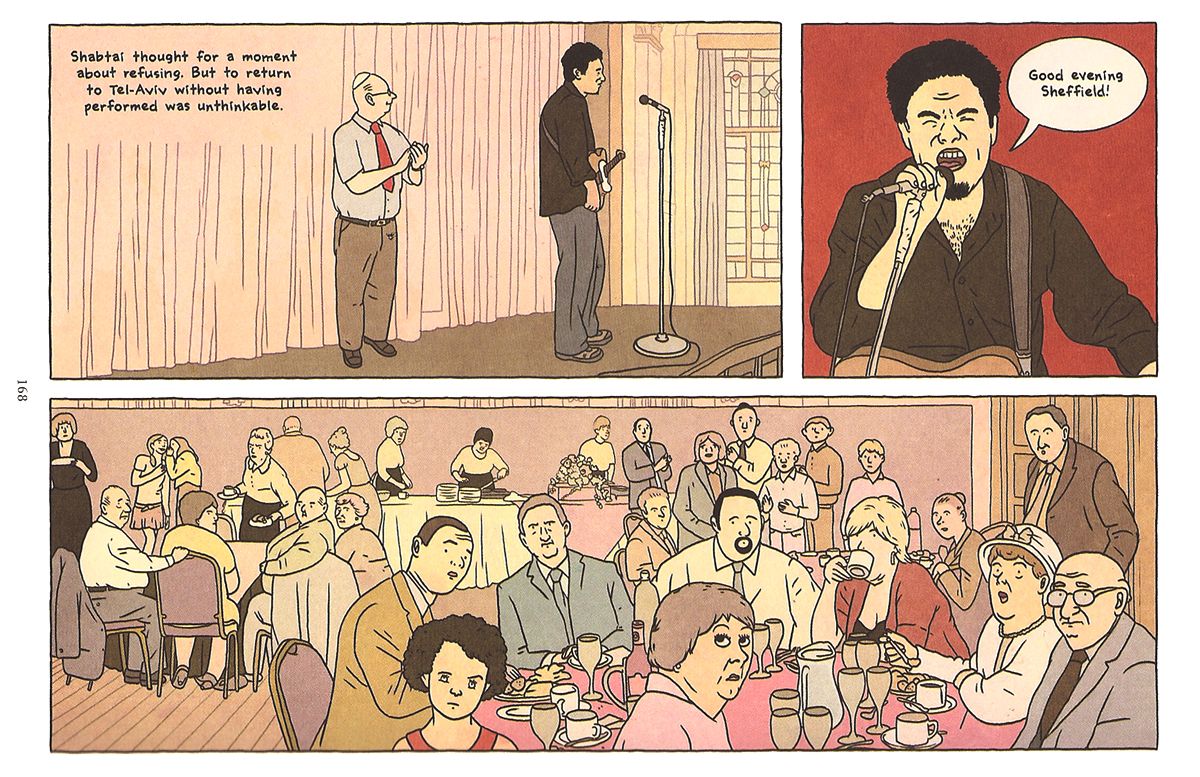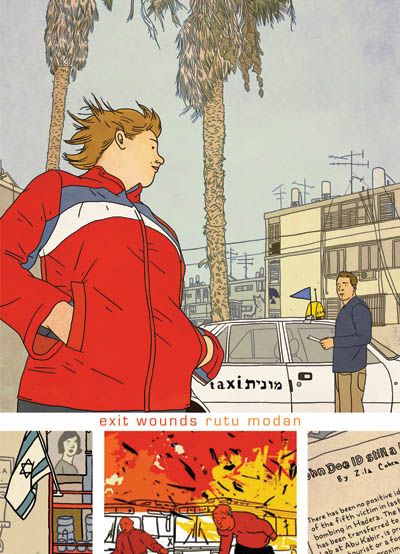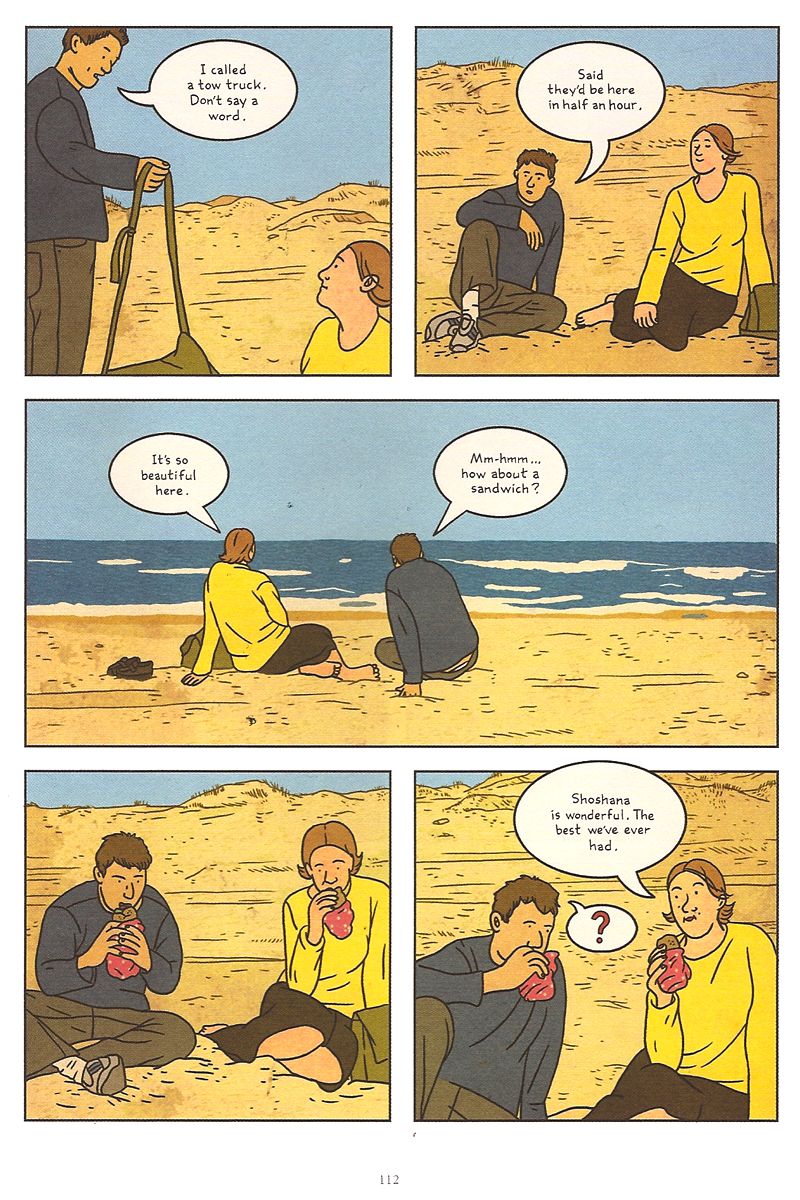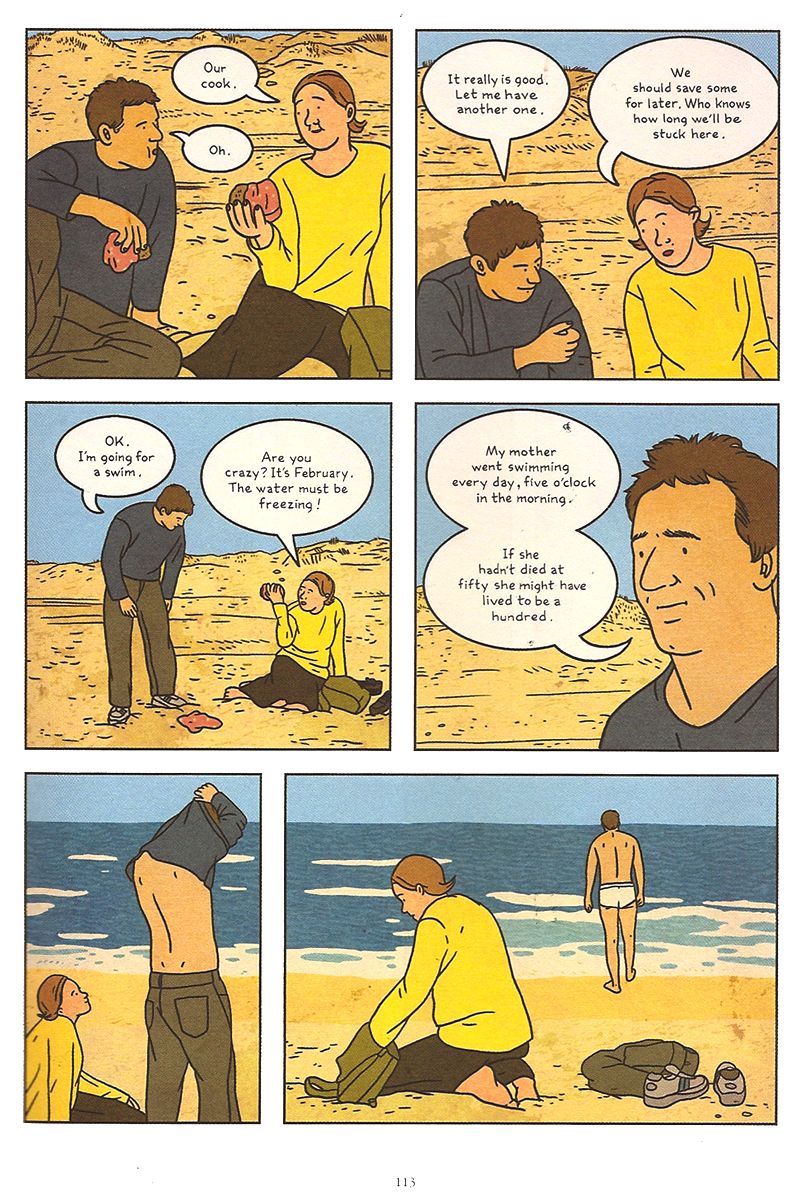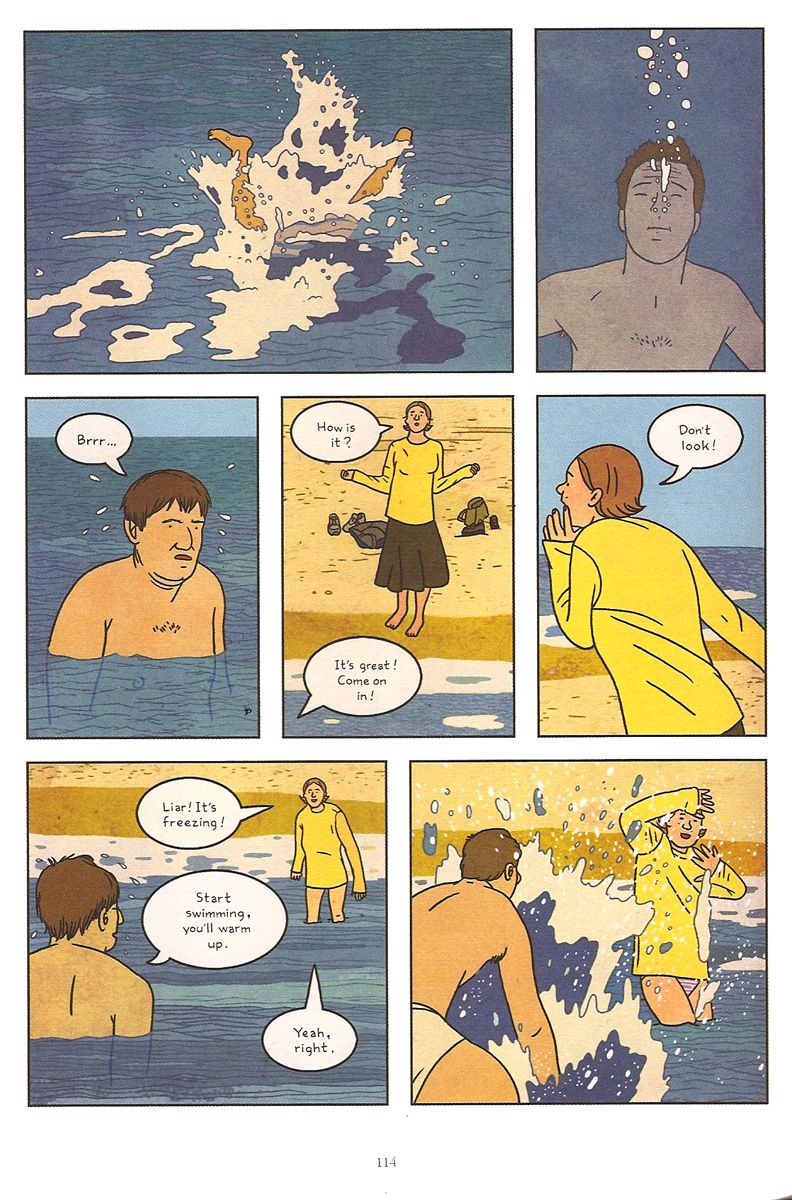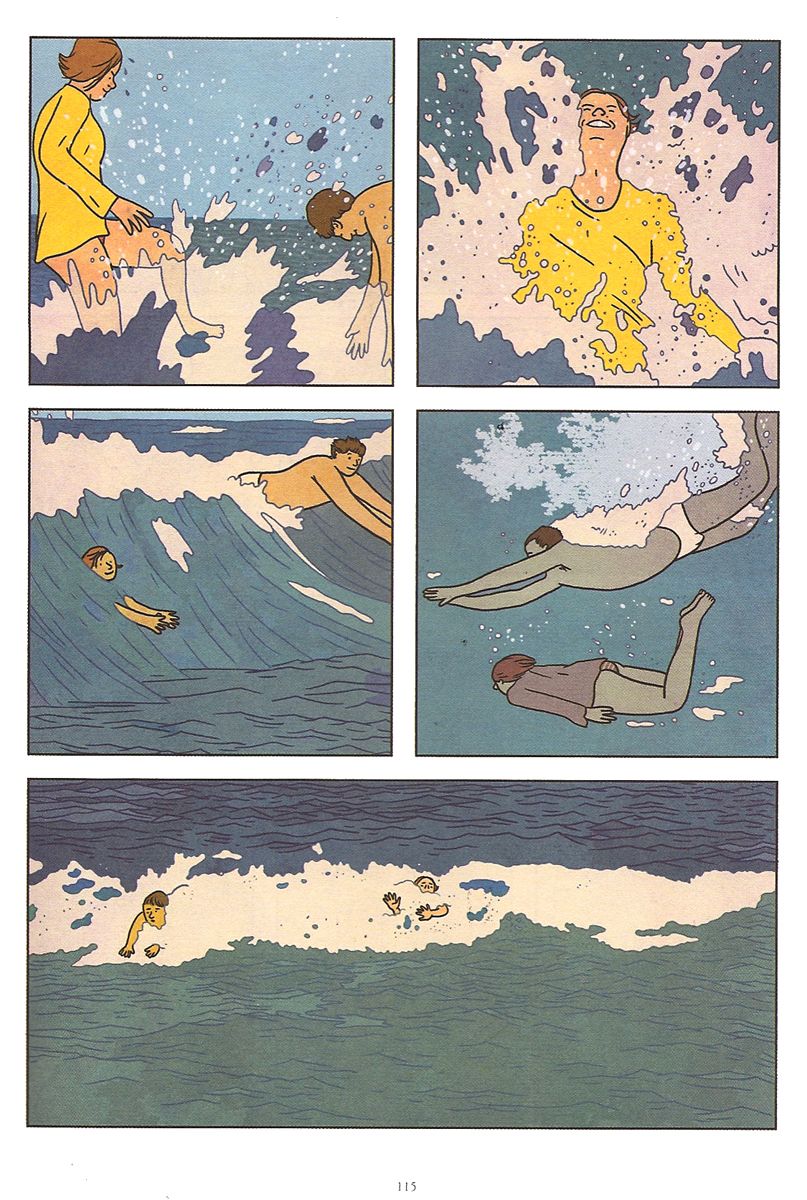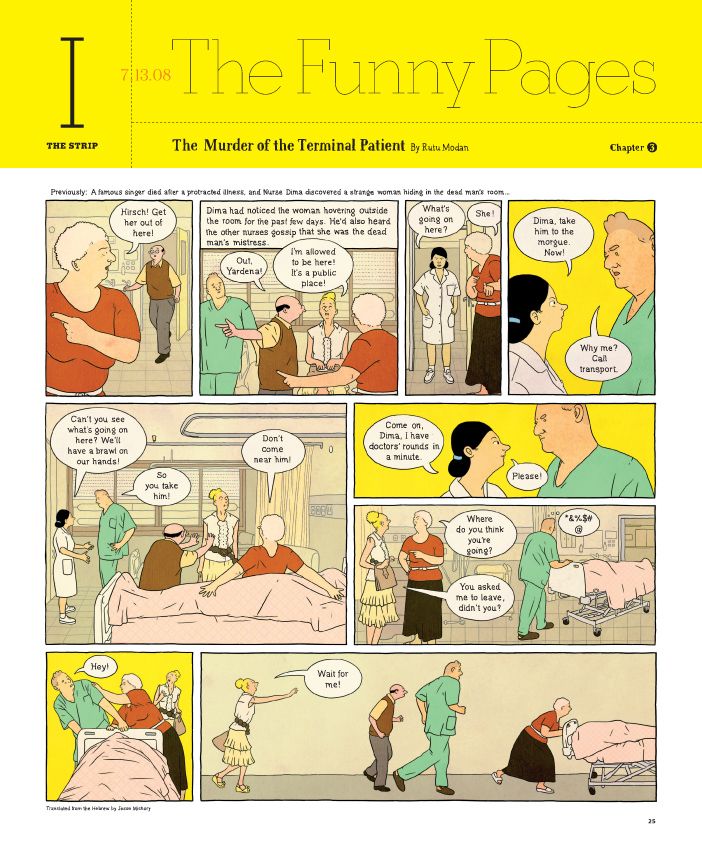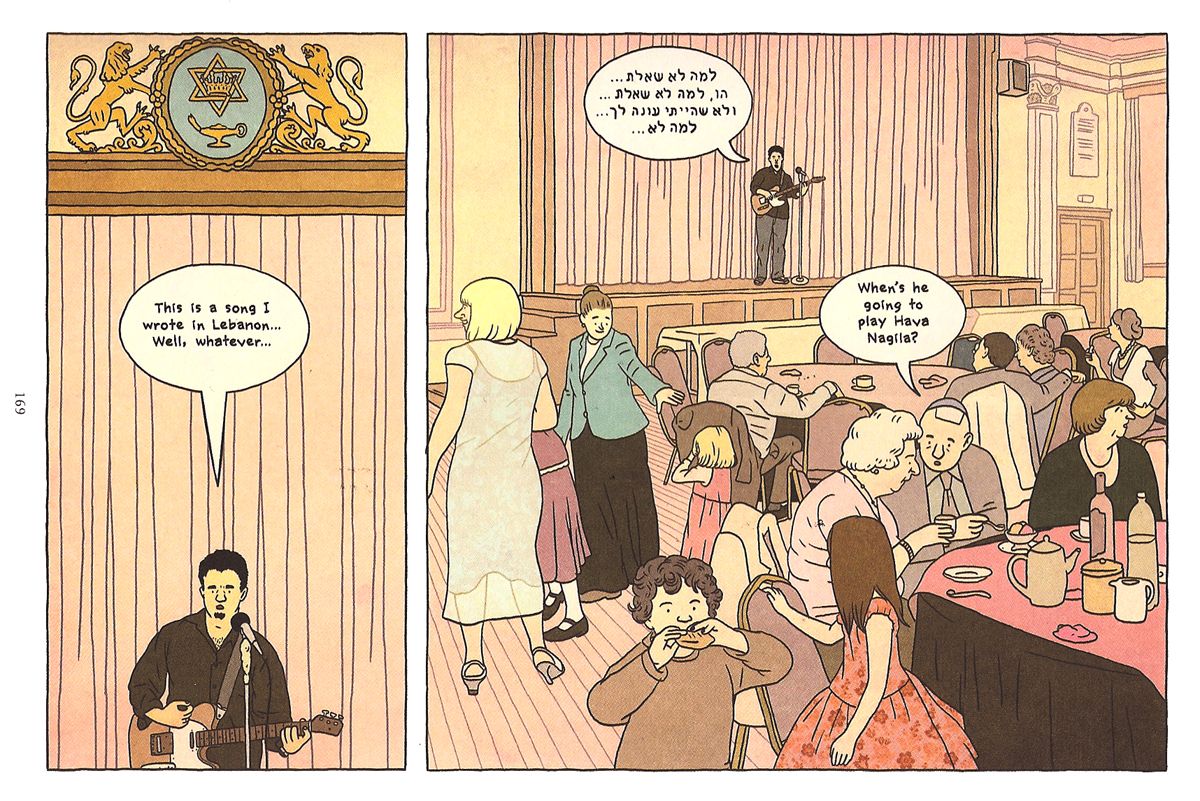I don’t know how I missed out on Rutu Modan’s work for so long, but man am I glad I finally discovered her.
Modan, an Eisner award-winning illustrator and writer worked as an editor for the Hebrew edition of MAD Magazine after graduating from the Bezarel Academy of Art & Design. She founded Actus Tragicus Comics Group in 1995 with Yirmi Pinkus and was awarded the Young Artist Of The Year award in 1997 and the Best Illustrated Children’s Book Award in 1998 by the Israel Museum. In 2005 she was chosen as ‘Outstanding Artist’ by the Israel Cultural Excellence Foundation. All leading up to her 2008 Best New Graphic Novel Eisner award for her first graphic novel, Exit Wounds…which would be my first toe dip into her brilliance.
Exit Wounds, a touching but unsentimental tale of a female soldier (Numi) that seeks out her older boyfriend’s adult son (Koby) after her boyfriend goes missing and she fears that he’s been killed by a bomb in Hadera. As Koby and Numi work together toward unraveling the mystery of whether Koby’s father has in fact perished in the bombing, their own lives – both their strengths and weaknesses – are uncovered.
Modan’s story is heartfelt, emotional, and moving without ever dancing toward cloying sentimentality – no easy feat when dealing with a love story – even a modern non-traditional one. I suspect it’s the honesty and the rawness of Modan’s characters - evident in both her writing and illustration - that keeps the book from ever going in that direction.
The art…I won't lie, it’s not going to be for everyone, but it is SO for me. The flat color palette is a perfect choice and the heft and roundness of Modan’s characters is so unique and refreshing that I just find myself staring at the imagery she creates – lingering over the look of her pages. Her inking is a strange flat consistent line, that looks soft instead of like a hard black. And though I wouldn't normally think I'd be a fan of such a stripped down inking style (I tend to love more voluminous Jamie Hernandez type inks), it works so well with her drawing style that I can't help but be transfixed by the final look. Modan's drawing style also well fits the tone (and substance) of the book nicely – the art is significant enough that it can carry the serious weight of the story without getting bogged down or exceptionally dark or dreary. Also refreshing from a female positivity standpoint, is that Modan’s female protagonist (Numi) is not beautiful in any traditional sense, certainly not by traditional comic book standards, and really Koby (our male protagonist) isn’t either. And it’s fitting I suppose that in a non-traditional love story of sorts, we would get non-traditional leads – just another way in which tonally Modan has hit her mark.
Exit Wounds quickly became one of the best graphic novels I’ve read in recent years, and as I put it down I went looking for more Modan – as much as I could find. The next piece I found was a 17-chapter story called The Murder of the Terminal Patient published by The New York Times and available here in its entirety. Published once a week from late June of 2008 through November of 2008, The Murder of the Terminal Patient is a quirky, funny, and yet melancholy tale literally about the murder of a terminal patient. Modan’s style is similarly effective here as it was in Exit Wounds - consistent and yet flexible, bending to a very different kind of story with ease and demonstrating her power as a storyteller.
Next I found Modan’s memoir piece Mixed Emotions for the The New York Times Visual Blog, a series of six stories about Modan and her family, published from May through October of 2007, and available in their entirety at the link above. I have to say, next to Exit Wounds; a few of the pieces here are my favorites of Modan’s work. In dealing with the often-sensitive subject matter of families – Modan manages to be both unflinchingly honest and to also find the beautiful sometimes painful humor in those situations and illustrates them with precision. Though her abilities as a superior storyteller were already obvious to me, seeing her deftness with memoir – often a tricky non-fictional hybrid of sorts – really solidified what a force she is on the comics scene and the fresh rarely seen perspective she can bring.
Now a devoted (okay, fine…obsessed) fan, I purchased Modan’s Jamilti And Other Stories, a collection of her older work and dug in. Jamilti and Other Stories includes a few of Modan’s pieces originally published through Actus Tragicus Independent Comics (and through Top Shelf) including Bygone, The Panty Killer, The Homecoming, Energy Blockage, and Your Number One Fan, as well as Jamilti which was originally published in Drawn & Quarterly #5.
Unlike her other work, which feels cohesive and almost settled in its voice, purpose, and style, Jamilti and Other Stories is full of her process and it’s fascinating to see. Modan’s storytelling, drawing style, and even subject matter choices are on parade in these stories, allowing an intimate peek into Modan’s evolution as not just an artist and storyteller, but as a person. Only in the first and last of the pieces (Jamilti and Your Number One Fan, respectively) do we begin to see where Modan is headed as an artist – where she ended up with Exit Wounds – and there’s a wonderful symmetry to that.
Rutu Modan is also the illustrator of two children’s books: Dad Runs Away With The Circus, by writer Etgar Keret (whose short fiction I adore) and Where Is by writer Tamar Bergman. Both are quite good and quite beautiful, though as children's books they don't really have the depth of her comics and graphic novel work. Modan also has a handful of works that have not been translated into English as yet (well, not that I can find anyway).
I think, like much independent work out there, it’s certainly true that Modan’s work will not be for everyone. But I find its simplicity and directness refreshing and delightful. Modan's drawing style is certainly not tailor made for fans of Superman et al., but I would urge anyone that's looking to branch out beyond the mainstream and perhaps more generally to anyone that's desperately looking for work full of passion and soul, full of life and honesty - warts and all - to begin your own love affair with Modan, as I did.
You can learn more about Rutu Modan in a few places on the web (though no devoted website that I have found as yet) and there’s a great interview with her here. You can buy her books at Drawn & Quarterly, Top Shelf, Amazon, and at book shops and comic book stores everywhere.

